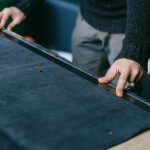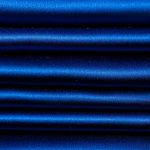If you've ever struggled to create smooth, accurate curves when cutting fabric for your sewing projects, mastering the use of a French curve ruler is crucial.
With the right techniques, you can effortlessly achieve precise and professional results. By understanding the anatomy of the ruler, selecting the appropriate one for your project, and mastering positioning and navigation, you can elevate your fabric cutting skills to the next level.
In this guide, we'll explore five essential tips for using a French curve ruler with fabrics, ensuring that you can confidently and expertly handle any curved pattern or design.
Key Takeaways
- Understanding the anatomy and measurement capabilities of the French Curve Ruler
- Selecting the right French Curve Ruler for your project
- Proper positioning and securing of the ruler on the fabric
- Navigating inner and outer curves with precision
Understanding the Anatomy of the French Curve Ruler
To understand the anatomy of the French curve ruler, examine its curved and straight edges to grasp its versatility and functionality. The French curve ruler is a vital tool for pattern drafting and garment construction, comprising a combination of curved and straight edges that allow for precision in creating and altering patterns.
When delving into the anatomy exploration of this tool, it's crucial to note that the curved edges are designed to mimic the natural contours of the human body, enabling the creation of smooth, flowing lines essential for garment design. Additionally, the straight edges facilitate accurate curve measurement and drafting of straight lines, making it a versatile tool for various design needs.
When examining the French curve ruler, take note of the different curve shapes it offers, such as shallow and deep curves, which are essential for accommodating different areas of the body and creating tailored designs. Understanding the curve measurement capabilities of the French curve ruler is key to mastering its use in garment construction, pattern drafting, and alterations.
This understanding will provide you with the insight needed to effectively utilize this tool in creating well-fitted and aesthetically pleasing garments.
Selecting the Right French Curve Ruler for Your Project
Choosing the appropriate French curve ruler for your project requires considering the specific shapes and curves needed for your pattern drafting and garment construction. The right French curve ruler can make a significant difference in the accuracy and efficiency of your work. When choosing the right ruler, it's essential to assess your project requirements and the compatibility of the ruler with the materials you are working with.
Consider the following factors when selecting a French curve ruler for your project:
| Factors to Consider | Description |
|---|---|
| Shape Versatility | Look for a ruler that offers a variety of curve shapes to accommodate different design elements. |
| Material Compatibility | Ensure that the ruler is suitable for the type of fabric or material you will be working with. |
| Size | Choose a ruler that is suitable for the scale of your project, whether it's large-scale pattern drafting or small-scale garment construction. |
| Transparency | Transparency can be helpful for accurately tracing patterns onto fabric. |
| Durability | Opt for a ruler made from sturdy and durable materials to ensure longevity and accuracy in your projects. |
Positioning and Securing the Ruler on the Fabric
Position the French curve ruler securely on the fabric before tracing the desired curve shape. To ensure accuracy, use securing techniques such as pattern weights or pins to hold the ruler in place. Pattern weights are especially useful for securing the ruler on delicate or stretchy fabrics without causing any damage.
When using pins, insert them along the straight edges of the ruler, ensuring they don't interfere with the curve you intend to trace. It's important to align the ruler properly with the fabric grain to maintain the integrity of the pattern. One effective alignment method is to use a clear grid ruler to check that the French curve ruler is parallel to the fabric grain.
Additionally, using a non-permanent fabric marker to make small marks at key points along the curve can help in repositioning the ruler if necessary.
Navigating Inner and Outer Curves With Precision
When navigating inner and outer curves with a French curve ruler, ensure that you maintain consistent pressure and smooth movements along the curve to achieve precise and accurate results. Precision cutting is essential when working with inner and outer curves in fabric manipulation.
To achieve this, start by positioning the French curve ruler so that it aligns with the curve you intend to cut. Apply gentle but firm pressure, keeping the ruler in place as you carefully manipulate the fabric around the curve. Make small adjustments to the fabric as needed, ensuring that it lays flat against the ruler to maintain accuracy.
When navigating inner curves, gently ease the fabric around the curve, using the French curve ruler as a guide for smooth, even lines.
For outer curves, manipulate the fabric with precision, ensuring that the ruler remains in place to guide your cutting.
Maintaining and Caring for Your French Curve Ruler
To properly care for your French curve ruler, it's important to follow these steps:
- Store it in a clean and dry environment to prevent warping or damage.
- Clean the ruler with a soft, dry cloth after each use to remove any fabric or chalk residue.
- Avoid using harsh chemicals or abrasive cleaning materials that can degrade the ruler's material.
- Ensure that the storing environment is free from extreme temperature and humidity fluctuations.
- Store the French curve ruler flat or in a protective case when not in use to prevent bending or breaking.
- Consider the material compatibility of the ruler with different fabrics to prevent potential damage during use.
Taking these maintenance steps will prolong the life of your French curve ruler, ensuring that it remains a reliable tool for your fabric pattern making and design needs.
Frequently Asked Questions
Can a French Curve Ruler Be Used on Different Types of Fabric, or Are There Restrictions on the Type of Fabric It Can Be Used On?
You can use a French curve ruler on different types of fabric, but there are limitations. Challenging fabrics like leather or vinyl may require specific techniques such as using a rotary cutter or sharp scissors.
Are There Any Special Techniques for Using a French Curve Ruler With Stretchy or Slippery Fabrics?
When using a French curve ruler with stretchy or slippery fabrics, special techniques are essential. To prevent shifting, place tissue paper underneath the fabric. Use clips instead of pins to avoid puckering. Smooth, steady movements are crucial for accuracy.
How Can I Prevent the French Curve Ruler From Slipping or Shifting While Using It on the Fabric?
To prevent slipping, ensure the fabric is compatible with the ruler. For stretchy fabrics, stabilize with pins or pattern weights. For patterned fabrics, align the ruler with the pattern to prevent distortion. Mastering this technique ensures precise curves.
Are There Any Tips for Using the French Curve Ruler on Fabrics With Delicate or Intricate Patterns?
When working with delicate patterns, it's essential to use the French curve ruler with precision. To avoid damaging the fabric, use gentle pressure and secure the ruler with non-slip grips. These tips ensure accurate tracing.
Can the French Curve Ruler Be Used for Creating Different Sizes of Curves, or Is It Limited to Standard Measurements?
Yes, the French curve ruler can be used for creating custom curves and offers measurement flexibility. It's commonly used for pattern drafting and allows you to design various sizes of curves, not just limited to standard measurements.
- Tetron Fabric for Marine Applications: Durability and Use Cases - June 18, 2025
- Tetron Fabric for Outdoor Furniture: Weather Resistance and Care - June 18, 2025
- Tetron Fabric for Wall Coverings: Style and Application Tips - June 18, 2025






